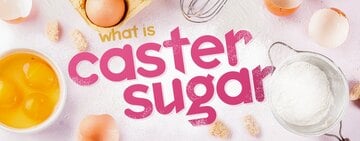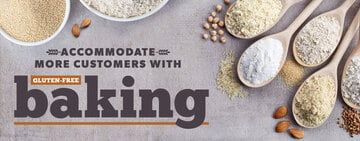What Is Molasses?
Derived from the Latin word "mel," meaning honey, molasses is a thick, dark syrup that is a byproduct of the sugar refining process. Its appearance can be described as viscous and sticky, similar to the consistency of honey. Molasses has a rich, earthy flavor that some people compare to caramel and toffee, while others describe it as having burnt sugar essences with smoky undertones. In addition to its unique taste, molasses also imparts its dark color to the recipes it’s added to.
Shop All MolassesWhat Is Molasses Made From?
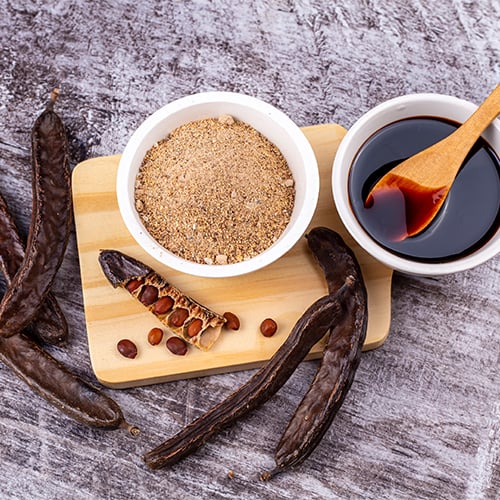
Molasses is a type of sweetener made from the residual syrup left behind after sugar is extracted from sugarcane or sugar beets. During the sugar refining process, the sugarcane or sugar beets are crushed to extract their juice. This juice is then boiled and clarified to remove impurities. As the juice boils, it begins to evaporate, leaving behind a thick, sticky residue. This residue is molasses. The different types of molasses are determined by the number of times the syrup is boiled and the amount of sugar that is extracted.
Types of Molasses
There are several types of molasses available, each with its distinct flavor and color. The most common types include light molasses, dark molasses, and blackstrap molasses. Light molasses has a mild and sweet flavor, while dark molasses has a stronger, more robust taste. Blackstrap molasses is the thickest and darkest variety and has a slightly bitter flavor. Learn more about the different types of molasses to discover the unique taste and versatility they can bring to your culinary creations below:
- Light Molasses: Also known as "first molasses", "sweet molasses", and “Barbados molasses”, light molasses comes from the first boiling of the sugarcane or sugar beet juice. It has a lighter color and a sweeter, milder flavor compared to other types of molasses. Light molasses is often used in baking, as a topping for pancakes and waffles, or as a sweetener in beverages.
- Dark Molasses: Dark molasses, also known as "full-flavored" or "second molasses", is produced from the second boiling of sugarcane or sugar beet juice. It has a thicker consistency and a more robust, bittersweet flavor. Dark molasses is commonly used in gingerbread, baked beans, and Kansas City-style barbecue sauce to add depth and complexity.
- Blackstrap Molasses: Blackstrap molasses is the most concentrated and darkest type of molasses. It is produced from the third boiling of sugarcane or sugar beet juice and contains the least amount of sugar. It has a distinctively strong molasses flavor with notes of burnt sugar and mineral-like bitterness accompanied by a thick, viscous texture. Blackstrap molasses is often used in savory dishes, such as marinades and glazes, to add a bold flavor profile.
- Unsulfured Molasses: Unsulfured molasses is made from sugarcane or sugar beet juice that has not been treated with sulfur dioxide. Sulfur dioxide is commonly used as a preservative and to lighten the color of molasses. Unsulfured molasses has a lighter flavor and a more natural, golden color compared to sulfured molasses. It is often preferred for its milder taste and is commonly used in baking, cooking, and as a sweetener.
Best Molasses for Baking
Light molasses is the most popular choice for baking. It is the sweetest type of molasses because it’s only boiled once and contains the most sugar. It's typically unsulfured. Light molasses is often used in pecan pie and cookies and as a sweet addition to French toast and other breakfast items.
What Is Molasses Used For?
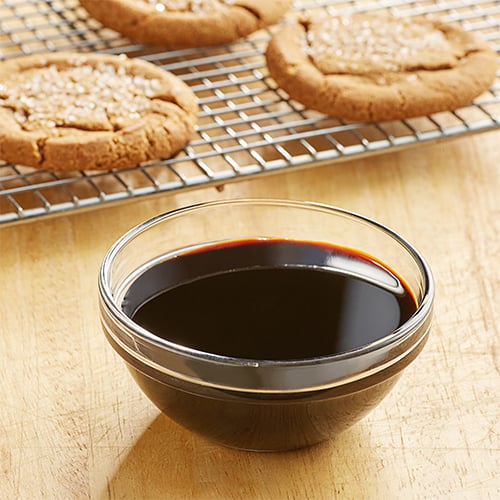
Molasses is a versatile ingredient that is widely used in commercial applications. Its distinct flavor, rich color, and nutritional benefits make it a valuable addition to everything from baked goods and confectionery items to sauces and beverages. Here are some of the most common uses for molasses:
- Baking: Molasses is a popular ingredient in baked goods, adding a rich, deep flavor and moist texture. It is commonly used in gingerbread cookies, cakes, breads, and muffins.
- Confectionery: Molasses is an ingredient in various confectionery items like candies, toffees, caramels, and chocolates. The addition of molasses not only adds sweetness but also provides a unique and complex flavor that sets these confections apart.
- Sauces and Marinades: Molasses is a common ingredient in barbecue sauces, glazes, and marinades. Its thick consistency and deep, sweet flavor help to create a rich and savory taste. The addition of molasses helps to achieve a desirable caramelization on meats when grilled or baked.
- Beverages: Molasses is used in the production of certain beverages, such as dark beers, rums, and spirits. It adds a distinct flavor and color to these drinks, contributing to their overall character. Molasses is also used in the production of certain soft drinks, providing a sweet and robust taste.
What Can I Substitute for Molasses?
While molasses adds a distinct flavor and moisture to dishes, there may be times when you find yourself without this ingredient in your pantry. Fortunately, several molasses substitutes can be used to achieve similar results in your recipes.
- Dark Corn Syrup: Dark corn syrup is a popular substitute for molasses due to its similar consistency. It is made from cornstarch and has a rich flavor that can mimic the taste of molasses. When using dark corn syrup as a substitute, it is important to keep in mind that it is sweeter than molasses, so you may need to adjust the amount of sugar in your recipe.
- Maple Syrup: Maple syrup is a viable substitute for molasses in recipes that call for a sweet and rich flavor. It is made from the sap of maple trees and has a distinct taste that can enhance the overall flavor profile of your dish. However, maple syrup is thinner than molasses, so you may need to reduce the amount of liquid in your recipe to compensate for the difference in consistency.
- Honey: Honey is a natural sweetener that can be used as a substitute for molasses in certain recipes. It has a similar thickness and sweetness, but it also adds a unique floral flavor to dishes. When using honey as a substitute, it is important to choose a mild variety of honey to avoid overpowering the other flavors in your recipe.
- Brown Sugar: Brown sugar is a great substitute for molasses since it is made by adding molasses back into refined white sugar, so it already contains some of the flavors and characteristics of molasses. Substitutions vary by recipe, but a good rule of thumb is to replace 1 cup of molasses with 3/4 cup of packed brown sugar.
- Pomegranate Molasses: Pomegranate molasses is a thick and tangy syrup made from pomegranate juice. While it may not have the exact flavor profile of traditional molasses, it can be used as a substitute in certain recipes, especially those that call for a hint of tartness. Pomegranate molasses can add a unique and exotic twist to your dishes.
Molasses vs Syrup
While molasses, maple syrup, and corn syrup are all sweeteners, they have distinct characteristics and applications. Molasses offers a robust flavor profile, maple syrup provides a delicate sweetness, and corn syrup is primarily used for its functional properties. Molasses is a byproduct of the sugar refining process, maple syrup is made from the sap of maple trees, and corn syrup is made from corn starch. While you can substitute them for each other, they shine in unique applications. Molasses is commonly used in baking, marinades, and sauces because its strong flavor pairs well with spices and adds depth to dishes like gingerbread cookies or barbecue sauce. Maple syrup is a popular choice for drizzling over pancakes, waffles, and French toast, but it can also be used as a natural sweetener in salad dressings or glazes. Corn syrup, with its neutral taste, is often used in confections like candies, frostings, and pecan pies.
How to Store Molasses
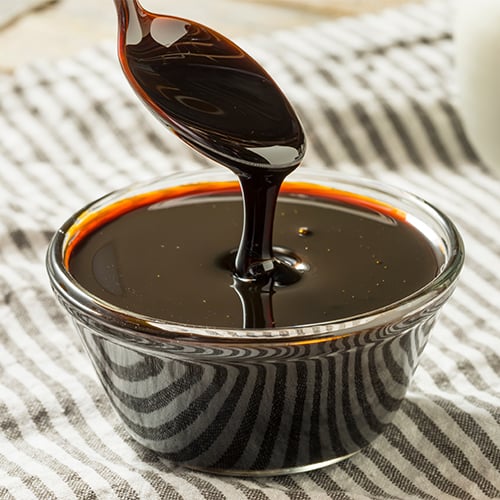
Proper storage of molasses is essential to maintain its quality, extend its shelf life, and help you avoid unnecessary waste and costs. By following these storage guidelines, you can ensure that your molasses remains fresh and ready to enhance the flavor of your recipes.
- Container and Packaging: Molasses is typically sold in glass jars, plastic bottles, or bulk containers. If you purchase molasses in bulk, consider transferring usable portions into food-grade plastic containers or stainless-steel drums with tight-sealing lids.
- Temperature: Molasses should be stored at room temperature, ideally between 50 and 70 degrees Fahrenheit. Avoid exposing molasses to extreme temperature fluctuations, as this can affect its quality and lead to spoilage.
- Moisture and Humidity: Molasses has a high moisture content, making it susceptible to mold growth if exposed to excessive moisture or humidity. Store molasses in a dry environment to prevent mold formation or the breakdown of its texture and flavor. Avoid storing molasses near sinks, dishwashers, or areas with high humidity levels.
- Light Exposure: Molasses should be protected from direct light exposure. Light can cause the molasses to darken and break down in quality over time. If storing molasses in clear containers, consider wrapping them in an opaque material or storing them in a dark cupboard or pantry.
- Shelf Life: Molasses has a long shelf life if stored properly. Unopened molasses can typically last for up to two years from the date of production. Once opened, molasses should be consumed within six months to maintain its freshness and quality. However, it is always recommended to check the manufacturer's label for specific shelf-life guidelines.
Molasses is a versatile and flavorful ingredient that has a wide range of commercial applications. Its rich taste and sticky texture make it a popular choice in the food, beverage, and confectionery industries. Whether it's adding depth to a sauce, creating chewy candies, or baking holiday treats, molasses is a valuable ingredient prized by bakers and chefs.

